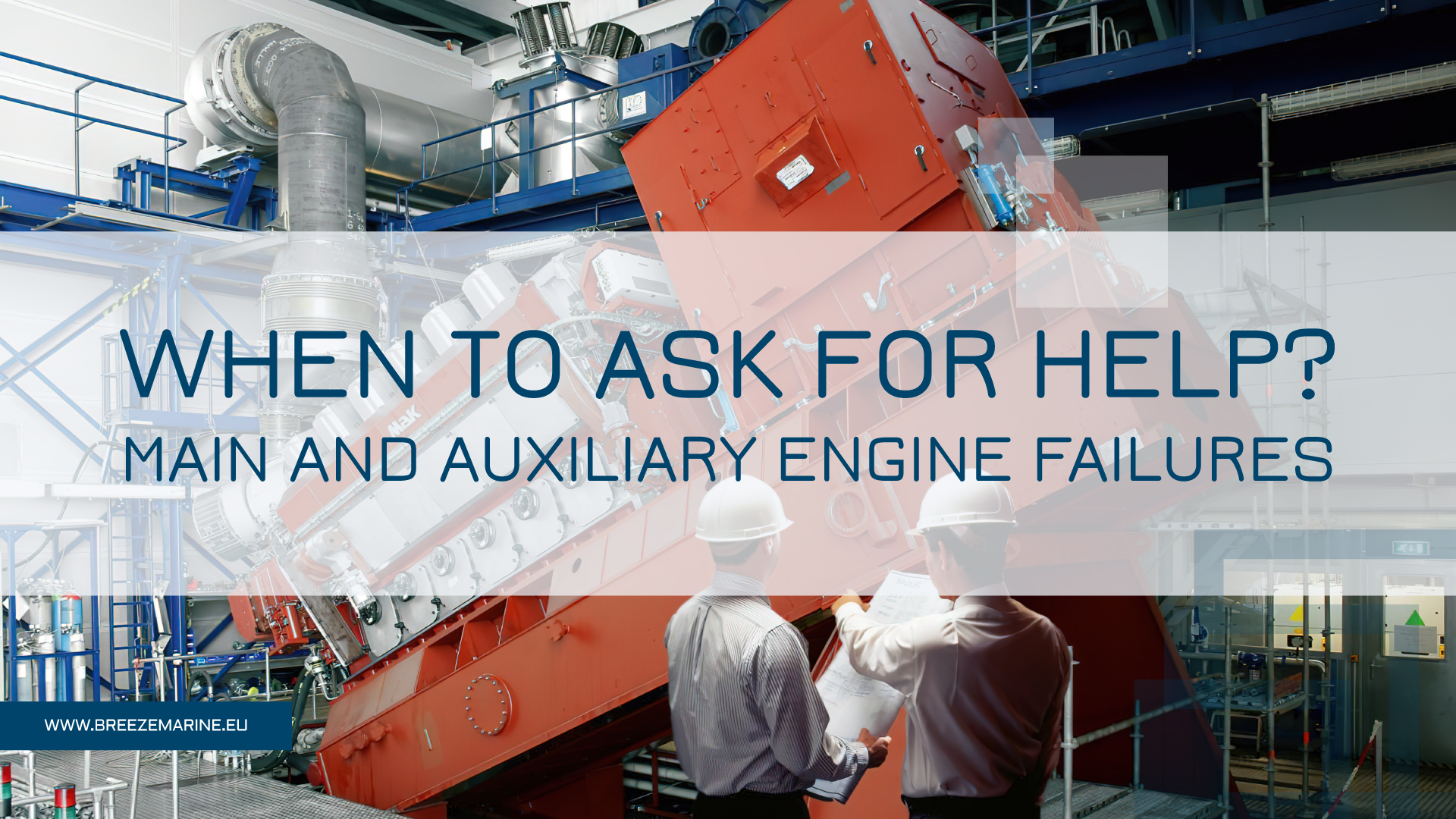In one passage, the ship overcomes vast distances; most of the time, it is thousands of miles from shore. If a breakdown occurs in the open ocean, the crew must be able to repair the damage themselves. However, it is impossible to do so in some situations without contacting the service center. We will discuss the most common damages to main or auxiliary engines, their causes, and what to do in specific circumstances.
The engine does not start or stop.
Factors such as increased oil viscosity or a drop in battery charge can contribute to an engine start failure. You can handle these problems independently by charging the battery or changing the oil.
Additionally, the issue could be caused by ignition as a result of the following:
- an empty fuel tank
- a clogged fuel filter
- a closed tank valve
- a low cetane number of diesel fuel (the cetane number is an indicator of the combustion rate of diesel fuel and compression required for ignition)ю
These problems are also eliminated independently. For example, it is possible to open the fuel tank valve and clean the filter. Also, the reason may be air ingress into the fuel system.
But there are cases in which it is necessary to contact a specialist:
- Moving parts are jammed in the engine (pistons, cylinder liners, camshaft, or crankshaft bearings). This can also cause a sudden stop of the engine.
- Malfunction in the starter
- The pre-fuel pump has failed.
- The valves are incorrectly adjusted, or the valve seats are damaged.
The reasons for a sudden engine shutdown are often:
- clogging of the fuel filter
- empty tank
- air in the fuel system.
A slow increase in engine speed at start-up
Usually, when starting the engine due to cooling after a long break in operation, the shaft must make at least 6-7 revolutions in the starting air before switching to fuel operation. If an engine that has just been stopped and has not had time to cool down is started, one or two revolutions are enough to start it.
Sometimes, due to breakage, the engine slowly increases the number of revolutions, leading to a large consumption of starting air. A very fast transfer of the engine to fuel operation leads to a failure in operation.
The reasons for this may be:
- insufficient starting air pressure;
- large resistances in moving parts;
- start-up air leakage and improper distribution (if the air supply period to the cylinder is too short).
Also, if, after starting, the engine doesn’t make enough revolutions and can’t reach full power, this could be because:
- insufficient fuel supply by pumps;
- presence of non-working cylinders;
- incomplete combustion of fuel;
- jamming of moving parts;
- the content of a large amount of water in the fuel;
- poor cleaning of the cylinders from exhaust gases and early fuel supply to the cylinders.
On the contrary, the diesel engine’s speed increases sharply, and the diesel goes wild.
A sudden increase in the rotation speed may be due to the following:
- Sudden discharge of the diesel load (loss of the propeller, disconnection of the coupling, disconnection of the load of the diesel generator, etc.)
- A malfunctioning speed controller or its drive.
Try to reduce the rotation speed or stop the diesel with the control lever to fix this. If this fails, stop the diesel engine by closing the diesel air intake device with improvised means or by stopping the supply of fuel to it. After stopping the diesel engine, repair the regulator and drive, and eliminate the cause of load relief.
Changing the color of exhaust gases, knocking in the engine
If the exhaust has changed color, the reason may lie in contamination of the compressor, turbine, or clogging of the pre-cleaning filter. This situation can be corrected by cleaning the components. Often the exhaust has the “wrong” color due to poor fuel quality. Therefore, it is necessary to replace it as soon as possible. Another reason may be an overload of the engine. In this situation, reducing the load level can help, and the exhaust color will return to normal.
However, a change in the color of exhaust gases is a sign of much more serious problems, such as:
- incorrect adjustment of valve clearances;
- damage to valve seats;
- untimely injection;
- valve sticking;
- damage to camshaft cams.
Incorrect clearance adjustments and untimely injection also lead to knocks in the engine. In such situations, you need to contact a specialist; disassembly of the engine is required.
Do it yourself or ask for help.
In the event of engine damage,Breezemarine Group will advise you on self-service for your unit, or our professionals will give expert assistance. We provide original equipment and approved replacement components for two- and four-stroke marine diesel engines. Our team collaborates with European, American, Chinese, Korean, and Japanese partners to deliver marine spare parts as soon as possible.
